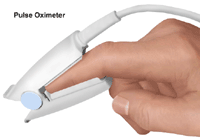Croup in Children
What is croup in children?
Croup is a common infection in children. It causes swelling in the upper part of the airway in the neck. It causes a barking cough, with or without fever. And it may cause problems with breathing. The illness is seen more often in the winter.
What causes croup in a child?
A virus is the most common cause of croup. But the illness may also be caused by bacteria, allergies, or reflux from the stomach. Viruses that are known to cause croup are:
-
Parainfluenza virus
-
Respiratory syncytial virus (RSV)
-
The flu (influenza virus)
-
Adenovirus
-
Enteroviruses
-
COVID-19
Croup is spread through direct contact with an infected person or their body fluids. The infection starts in the nose and throat and moves into the lungs. Swelling affects the area around the voice box (larynx) and into the windpipe (trachea).
Which children are at risk for croup?
Younger children are more affected by croup because their airways are smaller. A small amount of swelling can make it very hard for a baby or young child to breathe. Croup is most often seen in children 3 months to 5 years old. The peak time for croup to occur is 2 years old.
What are the symptoms of croup in a child?
The symptoms of croup are not always the same. As the illness moves from the nose to the lungs, the symptoms can change. They may include:
-
A runny or stuffy nose and slight cough
-
A cough that turns into a “seal’s bark”
-
Losing their voice (laryngitis) or having a hoarse cry
-
Fever
-
A high-pitched “creaking” or whistling sound when breathing in (stridor)
These symptoms are often worse at night and may wake your child from sleep. They may also seem to get better in the morning but get worse as the day goes on. Most children feel better in 3 to 7 days.
The symptoms of croup can be mistaken for other health problems. Make sure your child sees their healthcare provider for a diagnosis.
How is croup diagnosed in a child?
Your child’s healthcare provider can diagnose croup with a health history and physical exam. Your child may need tests if the provider thinks they may have other illnesses. A neck X-ray, chest X-ray, or both may be ordered.
How is croup treated in a child?
Treatment will depend on your child’s symptoms, age, and general health. It will also depend on how severe the condition is.
In severe cases of croup, or if your child is not breathing well, your child may need to go to the hospital. You can manage most milder cases at home. But it can sometimes be hard to tell if your child needs to go to the hospital because the illness changes. Your child may seem better one moment and then get worse the next. Your child’s healthcare provider may order the following medicines to help ease symptoms:
-
Inhaled medicines. These are used if your child is having a lot of trouble breathing. Inhaled treatments may be used to ease the whistling sound (stridor) and make it easier to breathe.
-
Steroids. An injectable steroid is often given if the child can’t take steroids by mouth (oral). This medicine can help prevent the illness from getting worse.
-
Other medicines. Your child's healthcare provider may prescribe other medicines if they feel your child’s croup is from allergies or reflux. The provider may also recommend acetaminophen or ibuprofen for a fever or discomfort. Antibiotics are not useful if the illness is caused by a virus.
For a milder case, these methods may help at home:
-
Have your child rest and drink plenty of fluids.
-
Don’t smoke in the home. Smoke can make your child’s cough worse.
-
Keep your child’s head raised. Prop an older child up in bed with extra pillows. Never use pillows with babies younger than 12 months.
-
Sleep in the same room as your child to help your child right away if they start to have trouble breathing.
-
Stay calm. If your child sees that you are frightened, it will increase their anxiety and trouble breathing.
-
Comfort your child. Sing your child’s favorite bedtime song or offer a favorite toy.
Breathing in steam or cool night air may also help your child breathe easier. You may want to try:
-
Putting a humidifier in your child’s room
-
Putting a warm, wet washcloth over your child’s nose and mouth as they breathe
-
Creating a steam room in your bathroom. Turn on the hot water in your bathroom shower. Keep the door closed so the room gets steamy. Sit with your child in the steam for 15 to 20 minutes. Don't leave your child alone.
-
If your child wakes up at night, try bundling them up and going outside to breathe in the cool night air.
What can I do to prevent croup in my child?
Here are tips to prevent the spread of croup:
-
Wash your hands often. Teach your child how to correctly wash their hands.
-
Stop your child from sharing cups and other dishware.
-
Keep your child at home until they are better.






